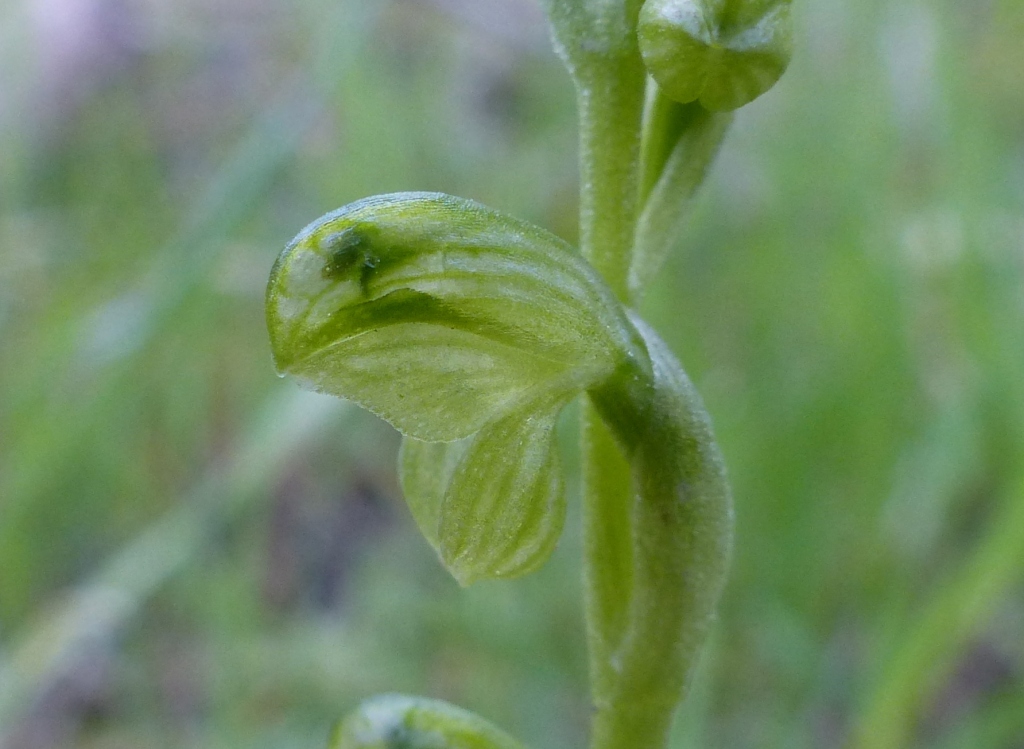Pterostylis mutica
R.Br. Midget GreenhoodFlowering plant to 35 cm tall, stem leaves 5–10, closely sheathing. Rosette leaves 6–12, ovate to oblong, 1–3 cm long, 0.5–1.5 cm wide, shortly petiolate to nearly sessile, margins entire. Flowers 2–20, uncrowded, pale green to yellowish-green, 8–10 mm long; galea curved throughout, suddenly decurved near the apex; dorsal sepal acute; lateral sepals deflexed, conjoined part broadly ovate in outline when flattened, 6–7 mm long, 7–7.5 mm wide, margins incurved, concave, united nearly to the apex, free points broadly triangular, c. 2 mm long, parallel; petals asymmetrical, broadest towards the base. Labellum pale green with a dark green basal appendage; lamina ovate-oblong, c. 3 mm long, c. 2.2 mm wide; appendage c. 1.5 mm long, recurved. Flowers Aug.–Nov.
LoM, MuM, Wim, VVP, VRiv, RobP, GipP, Gold, CVU, GGr, DunT, NIS, EGU, HSF, HNF, MonT, VAlp. Also WA, SA, Qld, NSW, ACT, Tas. Widespread from near the coast to well inland in a range of habitats including open forest, woodland, grassland and mallee scrub, on well-drained soils.
Pterostylis conferta is a less robust species with a more crowded inflorescence and is confined to basalt plains grasslands.
Jones, D.L. (1994). Pterostylis. In: Walsh, N.G.; Entwisle, T.J., Flora of Victoria Vol. 2, Ferns and Allied Plants, Conifers and Monocotyledons, pp. 798–830. Inkata Press, Melbourne.
 Spinning
Spinning


